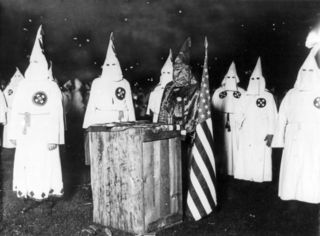Law and Crime
Hate Crimes Spurned By Group-Based Hatred
The grim aftermath of group identification
Posted December 21, 2016

Although hatred is an emotion that need not to acted upon, it is rare that emotions do not eventually shape our actions, and obsessive emotions (such as hatred, unreciprocated love, morbid jealousy and complicated grief) are more likely to motivate wildly compulsive behavior than calmer and more controllable emotions (such as, satisfaction, annoyance, and malaise). Physical abuse and domestic violence are a common consequence of individual-based hatred but so are various forms of emotional abuse, including passive-aggressive behavior.
Hate crimes are common reactive behaviors spurned by group-based hatred. A hate crime is a crime where victims were chosen because of their group identity, and hate crime perpetrators typically have no personal relation to or close relationship with their victims.
One significant case of a hate crime was that against Matthew Shepard, a young gay man (then 21). It received a vast amount of media attention, because of its severity and its subsequent effect on hate crime legislation more than 10 years later. On the night of October 6, 1998, Shepard met Aaron McKinney (then 22), and Russell Henderson (then 21), at the Fireside Lounge in Laramie, Wyoming. Shepard was under the impression that they would give him a ride home. McKinney and Henderson, however, parked the car at a deserted location, then brutally beat Shepard on his head and body and tied him to a fence, leaving him to die. Still tied to the fence, Shepard, who was unconscious, was discovered 18 hours after the attack by a biker. Shepard never regained consciousness and died from severe brain injuries on October 12, 1998. The assault was motivated primarily by Shepard’s sexual orientation.
The crime eventually led to the Matthew Shepard Act, which was approved under the Obama administration on October 28, 2009. The Matthew Shepard Act extended the existing 1969 federal hate crime legislation—which included crimes motivated by actual or perceived race, color, religion, or national origin—to include crimes motivated by a victim's actual or perceived gender, sexual orientation, gender identity, or disability. Hate crimes normally carry harsher sentences than similar crimes that are not motivated by race, gender, religion, and so on.
Unlike hate crimes, there is no clear legislation against hate speech in the U.S. As Jerome Neu characterizes it, hate speech is “the willful denigration of others based on their race, gender, sexual orientation, ethnic origin, religion, or other group characteristics.” (The Philosophy of Insult: p. 154). Because of the first amendment to the Constitution, which secures the right to free speech, any attempted legislation against hate speech has been deemed unconstitutional. In recent times, it became subject to much debate when president-elect Donald Trump selected Stephen Bannon as his new chief strategist and senior counselor. Bannon has been endorsed by the racist organization KKK as well as neo-Nazi organizations. Bannon is the formerly executive chairman at the right-wing website Breitbart News Network, a white supremist news website sometimes referred to as a “white ethno-nationalist propaganda mill.” Bannon has been alleged to be a racist, xenophobic, misogynist and anti-Semitic nationalist. Whether he really is all of these things or merely has been associated with people falling into these categories remains to be seen. But it appears that his main strategy for initiating change is to provoke hatred in people as a way of encouraging them to act. This strategy has many historical predecessors, not least in Nazi Germany. The chief tactic used by the Nazis to gain influence was an incitement of hatred of the Jew and love of Germany.
Hate speech can, indeed, provoke people in one of two ways. It can offend the minority groups it is directed at, and it can incite hate crime and legislation. Either one of these consequences is an evil that brings no good outcomes.
The question, though, is to what extent hate speech actually is protected by the Constitution. Although the first amendment protects the right to free speech, it doesn’t define “free speech,” which leaves it to the U.S. Supreme Court to decide on an appropriate definition. According to the Supreme Court, expressions of hate that defame or hurt another’s reputation or are intended to incite immediate violence remain unprotected by the first amendment to the Constitution. This might mean that Bannon’s idea of using hate speech to provoke people to act could be unconstitutional.
Berit "Brit" Brogaard is a co-author of The Superhuman Mind.

References
Jerome Neu (2008). The Philosophy of Insult, Oxford University Press.


